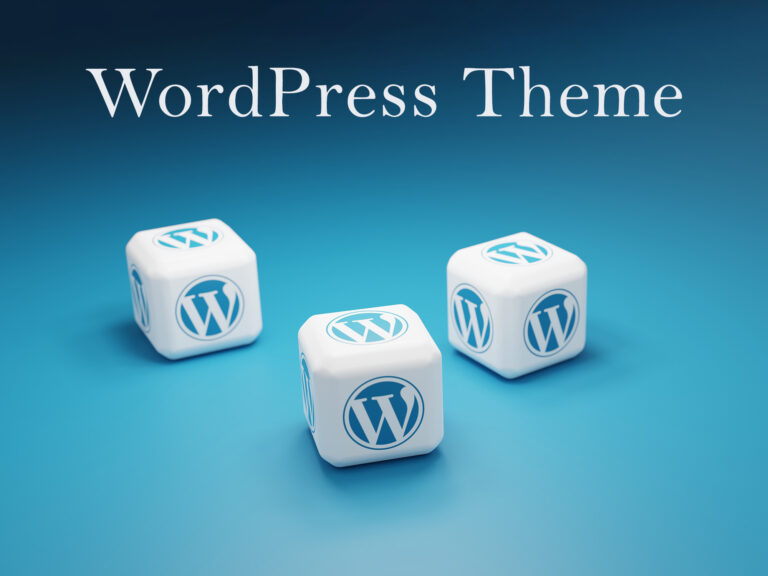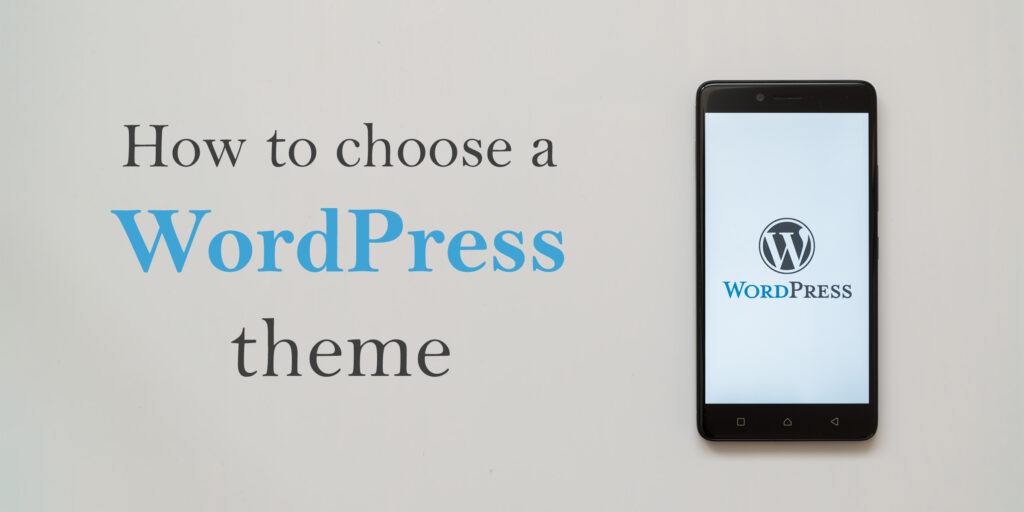In the ever-evolving landscape of the internet, having an appealing and functional website is crucial for businesses, bloggers, and individuals alike. WordPress, the world’s most popular content management system, offers a powerful platform to build your online presence. Central to this platform are WordPress themes, which determine the overall look and layout of your website. In this comprehensive guide, we will explore what WordPress themes are, how to choose the right one for your needs, where to find them, and how to install and customize them.
1. What is a WordPress Theme?
A WordPress theme is essentially the visual and structural backbone of your website. It defines the overall style, layout, and design of your site, making it a critical element in your web development journey. Themes include CSS (Cascading Style Sheets) and container codes that determine the appearance of your site’s pages, from fonts and colors to header and footer layouts.
Here’s a breakdown of the key components of a WordPress theme:
Layout: The layout of your website is determined by the theme. It dictates where elements such as the header, navigation menu, content, and sidebar appear on each page.
Design: The design of your site, including fonts, colors, and graphics, is controlled by the theme’s CSS. This allows you to maintain a consistent look and feel throughout your website.
Functionality: While themes primarily handle the design and layout, some themes also come with additional functionalities, such as custom widgets and page templates, which can enhance your website’s capabilities.
Now that you understand the importance of a WordPress theme, let’s delve into how to choose the right one for your specific needs.
2. How to Choose a WordPress Theme
Choosing the right WordPress theme is a pivotal step in creating a website that reflects your brand, engages your audience, and meets your goals. Here are the key steps to help you make an informed choice:
2.1 Define Your Website’s Purpose and Goals
Before browsing for themes, it’s crucial to have a clear understanding of your website’s purpose and objectives. Are you creating a blog, an e-commerce site, a portfolio, or a business website? Knowing your goals will guide your theme selection.
2.2 Consider Design and Aesthetics
The visual appeal of your website matters. Consider the design elements that align with your brand identity and target audience. Pay attention to color schemes, typography, and layout options offered by different themes.
2.3 Responsive Design
In today’s mobile-centric world, a responsive theme is a must. Ensure that the theme you choose adapts to various screen sizes and devices, providing a seamless user experience.
2.4 Customization Options
Flexibility is key. Look for themes that offer a range of customization options. This allows you to personalize your website and make it unique without diving into complex coding.
2.4 Performance and Speed
Website speed is crucial for user experience and SEO. Choose a theme that is optimized for performance, as slow-loading websites can deter visitors.
2.5 Compatibility
Check if the theme is compatible with the latest version of WordPress and with essential plugins you plan to use. Incompatibilities can lead to functionality issues.
2.6 Read Reviews and Ratings
Before making a final decision, read reviews and ratings from other users who have used the theme. This can provide valuable insights into the theme’s quality and support.
2.7 Support and Updates
Ensure that the theme is actively maintained and receives regular updates. This is important for security and compatibility with future WordPress versions.
3. Where to Find WordPress Themes
Now that you know what to look for in a WordPress theme, let’s explore where to find them:
3.1 WordPress.org
WordPress.org offers a vast repository of free themes that you can search and filter based on various criteria. These themes are generally well-maintained and undergo a review process to ensure quality and security.
3.2 Theme Marketplaces
There are numerous theme marketplaces like ThemeForest, Elegant Themes, and TemplateMonster, where you can find both free and premium themes. Premium themes often come with additional features, support, and customization options.
3.3 Custom Themes
If you have specific design requirements or want a truly unique website, consider hiring a web developer to create a custom WordPress theme tailored to your needs.

4. How to Install and Activate a WordPress Theme
Once you’ve chosen the perfect theme for your website, the next step is to install and activate it. Here’s a step-by-step guide:
4.1 Install a Theme from WordPress.org
- Log in to your WordPress admin dashboard.
- Go to “Appearance” and then click “Themes.”
- Click the “Add New” button at the top of the page.
- Use the search bar to find your chosen theme or click “Upload Theme” if you have a theme file in ZIP format.
- Click the “Install” button next to your selected theme.
- After installation, click the “Activate” button to make the theme live on your site.
4.2 Install a Theme from a Marketplace or Custom Theme
- If you’ve purchased a premium theme or received a custom theme file, go to “Appearance” > “Themes” in your WordPress dashboard.
- Click the “Add New” button at the top of the page.
- Click the “Upload Theme” button.
- Choose the ZIP file containing your theme and click “Install Now.”
- After installation, click the “Activate” button to set the theme as your website’s active theme.
Once your theme is activated, your website will reflect its design and layout. However, customization is often necessary to make it truly unique and align it with your branding.
5. How to Customize Your WordPress Theme
Customizing your WordPress theme allows you to put your personal touch on your website and tailor it to your specific needs. Here’s how to get started:
5.1 Customizer
WordPress provides a built-in tool called the Customizer that allows you to make many visual and structural changes without touching code. To access it:
- Go to “Appearance” > “Customize” in your WordPress dashboard.
- Here, you can modify various aspects of your theme, such as site identity, colors, typography, and layout. Depending on your theme, additional customization options may be available.
- Preview your changes in real-time to see how they affect your website.
- Once satisfied, click the “Publish” button to save your changes.
5.2 Widgets and Menus
Themes often come with widgetized areas where you can add various elements like text, images, and custom content. You can manage widgets by going to “Appearance” > “Widgets.”
Menus are another crucial aspect of customization. Create and edit menus in the “Appearance” > “Menus” section.
5.3 Page Builders
To achieve more advanced and intricate customizations, you can use page builder plugins like Elementor, Beaver Builder, or Divi. These tools allow you to create custom page layouts with a user-friendly drag-and-drop interface.
5.4 CSS Code Editing
If you have coding experience or need to make highly specific design changes, you can edit the theme’s CSS code. However, exercise caution when modifying code, as errors can break your website. Always make a backup before making changes.
To add custom CSS:
- Go to “Appearance” > “Customize.”
- Click on “Additional CSS.”
- Enter your custom CSS code here and click “Publish” to save your changes.
Remember that extensive code editing is best left to experienced developers to avoid unintended consequences.
For how to add CSS code? Please refer to How To Use CSS In WordPress.

Conclusion
Selecting, installing, and customizing a WordPress theme is a crucial part of building a successful website. By understanding what WordPress themes are, how to choose the right one, where to find them, and how to install and customize them, you can create a website that not only looks great but also meets your specific goals and requirements. Whether you’re a blogger, a business owner, or an individual looking to establish an online presence, the right WordPress theme can make all the difference in achieving your digital aspirations.
For more information, visit Bel Oak Marketing.





